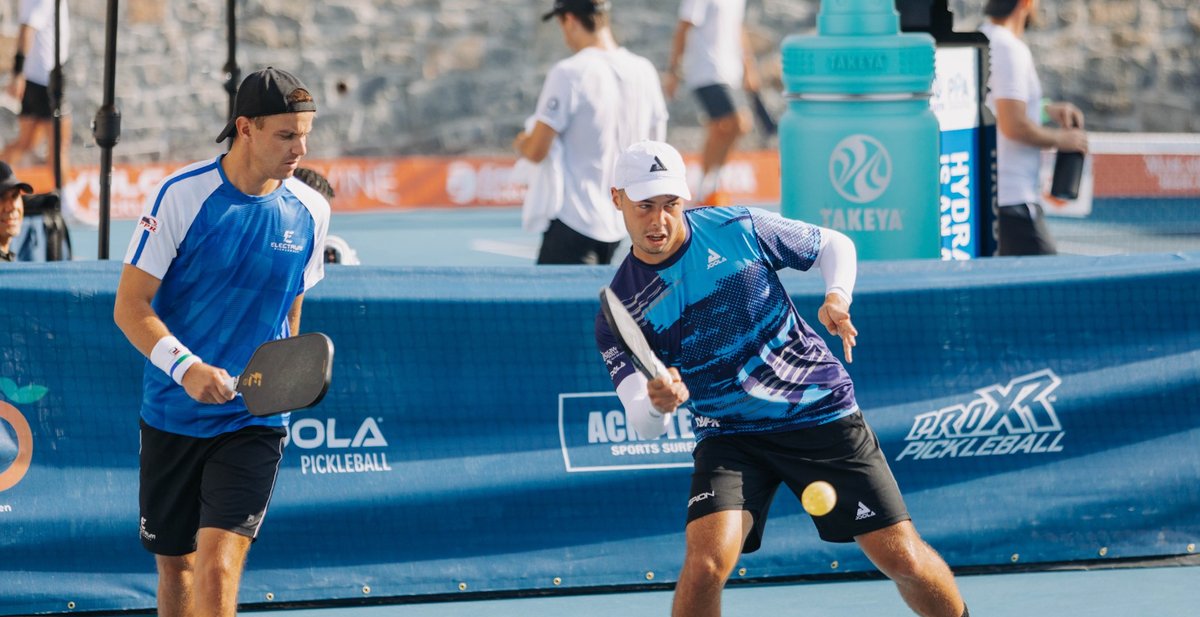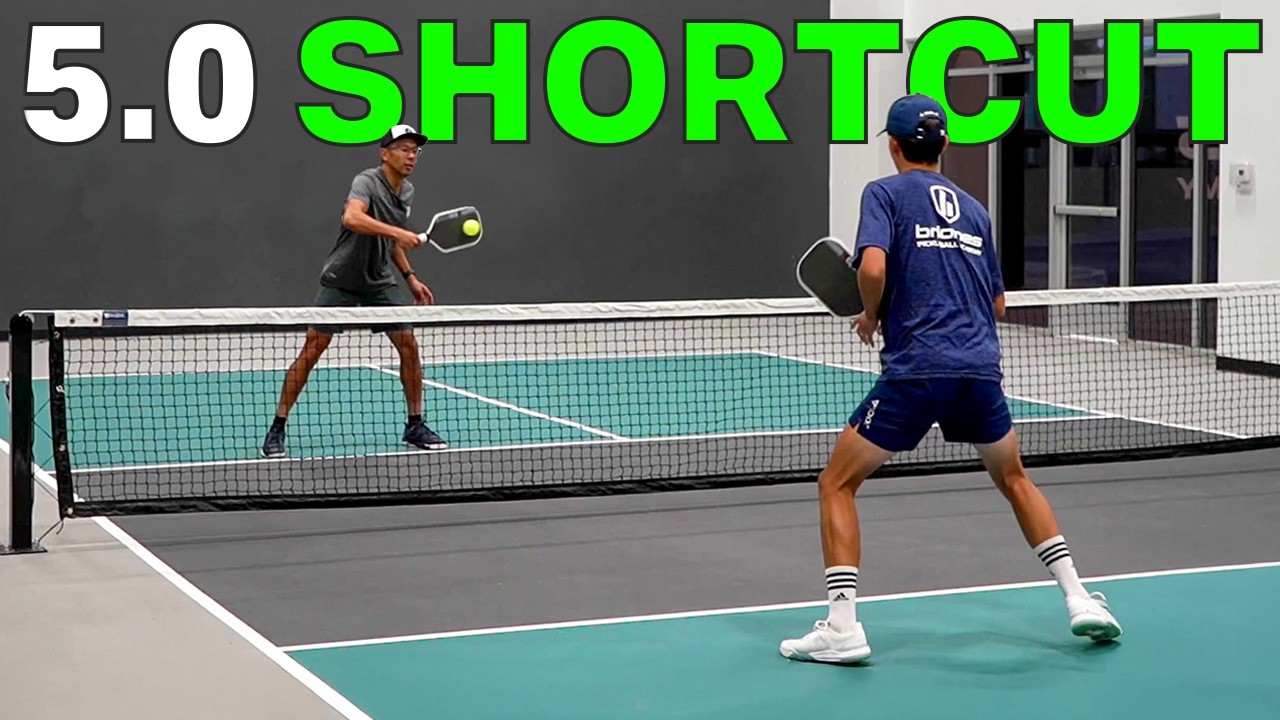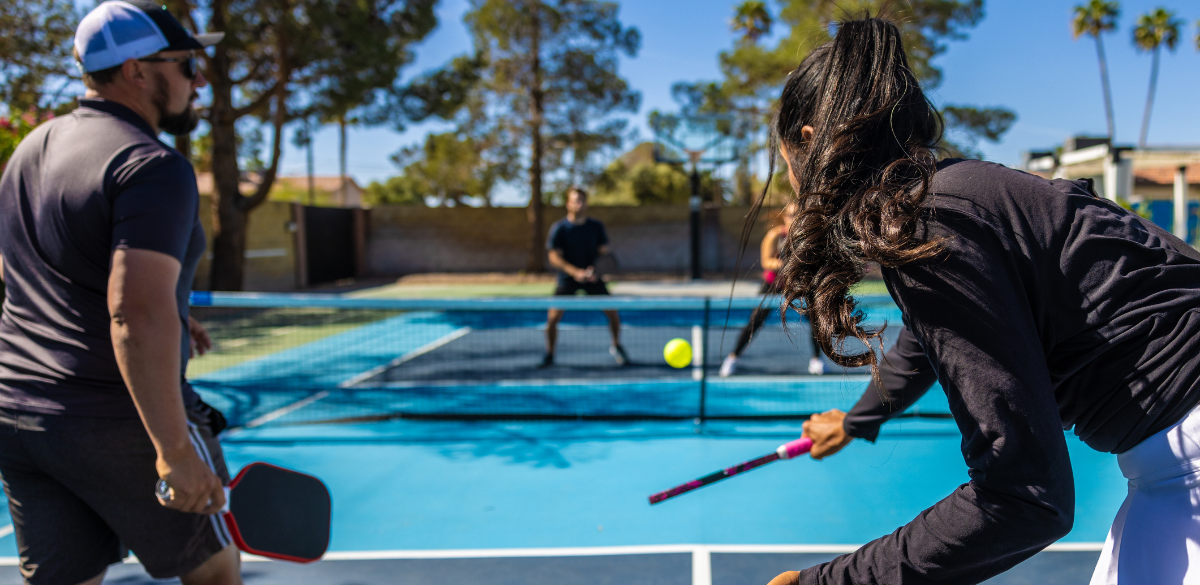The reset lets you survive the transition phase without giving your opponents an easy put-away. It’s the shot that turns defense into offense.
Most pickleball players treat defense like a necessary evil, something to survive rather than something to dominate. But they’re missing out on what might be the most valuable shot in the game: the reset.
That’s where Kaitlyn “The Voice of Pickleball” Kerr comes in.
In a recent instructional video from BK Pickleball, she breaks down exactly how to hit resets like a pro, offering insights that could fundamentally change how you approach transition play.
Love pickleball? Then you’ll love our free newsletter. We send the latest news, tips, and highlights for free each week.
Why the Reset Matters More Than You Think
Here’s the thing about pickleball: the kitchen line is where games are won. You’re most dangerous once you get there, which means the journey from the baseline to the kitchen is everything. That’s where the reset lives.
Kerr learned this shot from Collin Johns, still widely considered the master of pickleball defense.
Collin Johns Shares 15 Pickleball Gems for the Amateur Player
In a recent Instagram post, Collin Johns documented his experience attending an
amateur pickleball tournament. > View this post on Instagram
[https://www.instagram.com/p/Cj36KneL5ZC/?utm_source=ig_embed&utm_campaign=loading]
A post shared by Collin Johns (@collinjohns_pb)
[https://www.instagram.com/p/Cj36KneL5ZC/?utm_source=ig_

The reset isn’t flashy.
It won’t win you style points. But it’s the shot that keeps you alive when your opponent is attacking, and it’s the shot that lets you transition from a defensive position to an offensive one.
When you’re moving up from the baseline after hitting a third shot drop, or when a ball comes over your head and you’re scrambling forward, the reset is your best friend.
The Three Non-Negotiables
Kerr breaks down the reset into three fundamental principles, and honestly, they’re simpler than you’d think. The problem isn’t understanding them; it’s executing them under pressure.
- Move your feet first. This is priority number one. If you’re stretching or leaning to one side, you’re already in trouble. You won’t get an unattackable ball over the net from a compromised position. Your feet need to get you to the ball, not your arms. It sounds obvious, but watch most recreational players and you’ll see them reaching, lunging, and generally fighting physics instead of working with it.
- Get low. Bend those knees. Squat down. This isn’t optional. Standing straight up and trying to hit a reset is a recipe for back pain and weak shots. The power and control come from your base, not from your paddle arm. When you’re low, you have better angles, better control, and better positioning for what comes next.
- Keep your paddle face open. Not completely down, but slanted with an open face. This is what allows the ball to float over the net softly instead of diving into it. Kerr loves using a two-handed grip on the backhand side and one hand on the forehand, making sure that paddle face stays open throughout the motion.
Advanced Pickleball Strategies: 3 Tactics to Reach 5.0 Fast
Getting to the next level isn’t about one magic technique or one breakthrough moment. It’s about understanding that pickleball has layers – and you’ve got to master them all to be great.

Once you understand the principles, the mechanics become clearer. When you’re in transition and that ball is coming at you, your feet need to be set before the ball arrives. You want a stance about as wide as your shoulders, giving you stability without restricting movement.
The reset isn’t a swing.
Let us repeat that because it’s crucial: the reset is not a swing.
You’re not trying to generate power or pace. You’re tracking the ball, opening your paddle face, and allowing the paddle to do the work. It’s a touch shot, pure and simple.
- Your base stays solid
- Your feet don’t move once they’re set
- You let the ball’s momentum do most of the heavy lifting
💡
Kerr demonstrates this beautifully in the video. She gets low, keeps her knees bent, and positions her paddle out in front of her body. All she’s doing is tracking the ball and opening the face.
The result? A soft, unattackable ball that lands in the kitchen and gives her team the chance to take the offensive.
Heads up: hundreds of thousands of pickleballers read our free newsletter. Subscribe here for cutting edge strategy, insider news, pro analysis, the latest product innovations and more.
The Drill That Actually Works
Knowing how to hit a reset and being able to hit one under match pressure are two different things. That’s why Kerr recommends a specific drill that’s a variation on the popular “7-Eleven” drill.
Here’s how it works:
- One player starts in transition, one player is already at the kitchen line.
- The player at the kitchen line hits an overhead to start the point, making it harder on the resetter right from the jump.
- After that first shot, you play out the point normally.
- The resetter’s job is to reset every ball that comes into the kitchen while the other player applies pressure.
This drill is brilliant because it forces you to hit resets when you’re tired, when you’re under pressure, and when the ball is coming at you hard. It’s not a comfortable drill, but that’s exactly why it works. Match situations are rarely comfortable, so your practice shouldn’t be either.
Three Pickleball Drills Disguised as Games
Pickleball mini-games combine strategy, fitness, and fun while sharpening essential skills such as consistency, decision-making, and mental toughness.

The Bigger Picture
Kerr isn’t just teaching technique here, she’s teaching philosophy.
- The reset is about patience
- It’s about understanding that sometimes the best offensive move is a defensive one
- It’s about getting to the kitchen line and staying there, which is the foundation of modern pickleball strategy.
The sport has evolved. Players are faster, stronger, and more skilled than they were even a few years ago. The reset has become essential because it’s the shot that lets you survive the transition phase without giving your opponents an easy put-away. It’s the shot that turns defense into offense.
Kerr also touches on something important: once you get to the kitchen line, you need to speed things up. Don’t keep resetting. Start driving, start attacking. The reset gets you there, but aggression keeps you there. It’s a progression, not a destination.
